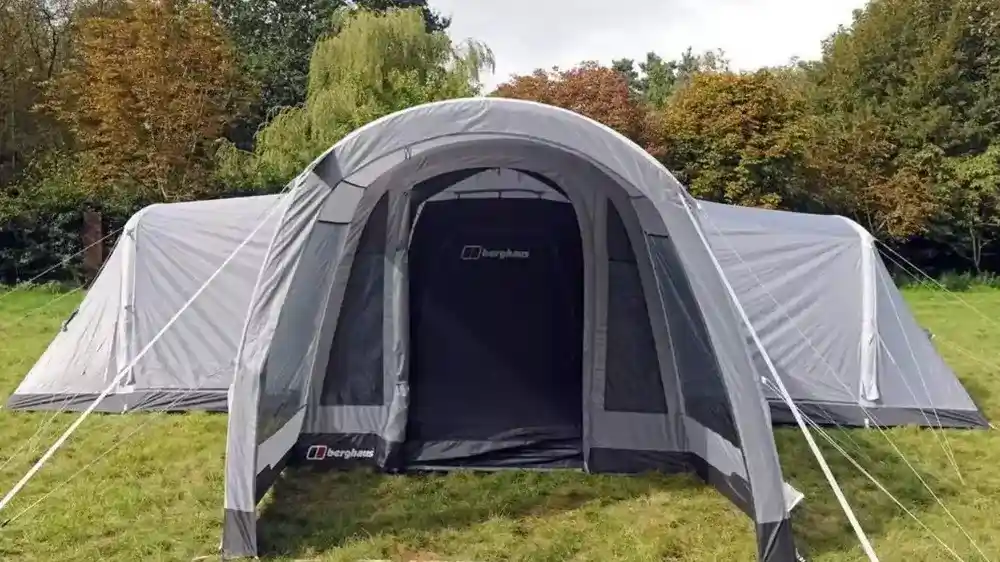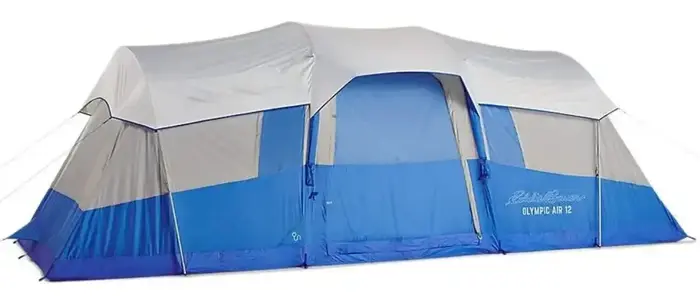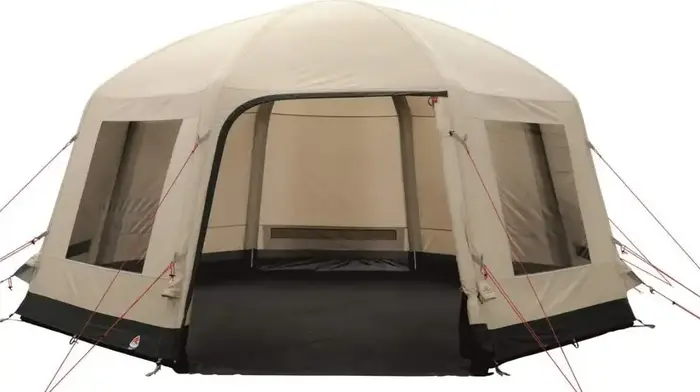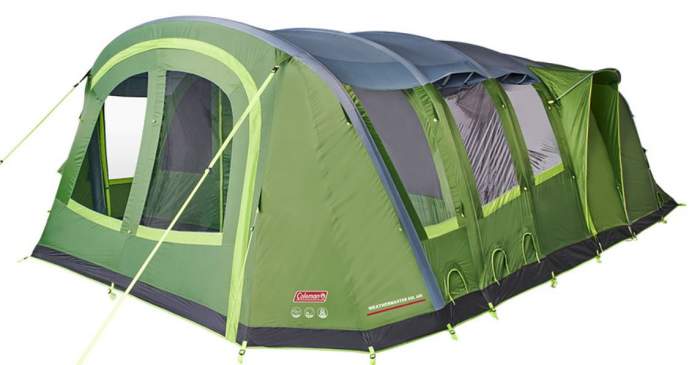Air tents or inflatable tents are becoming increasingly more popular and there are more and more of them on the market. But are they worth it? Well, the answer is in the text, so keep reading.
Air beam tents are always car-camping type family camping tents, huge in size and incredibly comfortable. In spite of such a size, they are also surprisingly easy to set up, but you wouldn’t want to carry them far from your car. They are also heavy and bulky, though this is for some good reasons.

About terminology first
There are at least three different phrases used for the tents which I am discussing here. One is ‘air tents’ and strictly speaking this is not so accurate. Sometimes the word ‘air’ is used in the names of standard tents to describe the fact that they are nicely ventilated.
Yet another phrase is ‘inflatable tents’. Here again, the name is not so accurate because you do not really inflate the tent.
The most correct phrase should be air beam tents or air beam inflatable tents.
So what is an inflatable tent or an air beam tent?
In short, this is a tent which is supported with air-inflated beams instead of classic poles. In many of them there are no solid poles at all.
But in some, you can have one or two short solid poles used for brims above doors or to support a front porch. There are also pure hybrid type tents where you have solid poles and inflatable beams combined. One great example of this type is the Eddie Bauer Olympic Air 12 Tent shown in the picture.

How do you inflate an air tent?
The design is now almost the same in all air beam tents. It includes supporting beams that have valves which are dual use, for inflation and deflation.
But there are clever designs where you can inflate several beams from the same inflating point. You can see this in the Robens Aero Yurt 8 Man Airventure Air Tent (the picture below), and also in the Naturehike Airpole Bower Hexagonal Inflatable Screen Room.

This is possible because of their yurt-type structure in which the air beams converge to one top point where they are interconnected. So you inflate from one valve and the air spreads into the shole system and the tent raises from the ground by itself.
But when you want to pack the tent, you can open all the valves (four of them are visible in the picture above), and the tent collapses very quickly.
Yet another great example is the Zempire Pronto 5 Tent that is also with a single inflation point, but this tent has a few solid poles as well. So this is a hybrid type.
Though such designs with a single inflation point are indeed rare, and most of inflatable tents are tunnel-type with separate beams and separate inflating points.
You normally always get a manual pump for inflation included in the package. In any case, it is very easy to raise such a tent from the ground.
What are the main advantages of an air tent?
If you follow the tents industry, then you know that support of large tents has been a big challenge in the past. It was difficult to support large roof spans with thin solid poles that were also supposed to be flexible and strong.
But DAC brand has made a revolution with its specially designed poles that were created for large family camping tents and expedition tents. After that it was possible to build much larger shelters.
However, family camping tents are becoming increasingly larger and larger, and there are limits for solid poles, unless this is about framed tents with extra thick and extra heavy steel poles.
So this is where air beams came into focus. My impression is that there are no limits regarding the size of such camping tents. If you check around you will see that among the largest camping tents, the majority of them are with air beams.
To see what I mean, check this Berghaus Kepler 9 Nightfall Air Tent (see the top picture above), and also the Coleman Weathermaster 8XL Air BlackOut Tent shown below. These tents have around 27 square meters of floored area in their multiple rooms. So these are true camping castles, very luxurious and pleasant.

Note that both of these tents are also dark room tents that are discussed in my separate text, so follow the link to see more. About the Coleman tent you can see a bit more in this short video:
Are air tents OK in the wind?
The answer here is easy, yes they are. Supporting air beams may bend under wind pressure, but they restore their shape instantly when the wind pressure drops. As you know this is not so with solid poles, they may break and crack and such a damage is hard to repair.
In some air beam tents you have inner stabilizing straps that add to rigidity with respects to side winds. This feature is available in practically all inflatable tents from Vango. This is what they call the TBS II system.
For longitudinal stabilization of air beam tunnel tents, some good examples have very strong front and rear straps, you can see them in the previously mentioned tents from Berghaus and Coleman.
In addition to all this, air beam tents normally always come with a full set of usual guylines and stakes to secure them and fix to the ground.
So in my view, the main advantages of air beam tents can be summarized as follows:
- There is almost no limits to their size, so they offer lots of comfort.
- One person can easily raise from the ground even the largest air beam tents.
- They behave great in windy conditions.
What are the main disadvantages of air beam tents?
Actually, this is related to the pros (advantages) mentioned above, so the cons can be summarized as follows.
- Air beam tents are bulky.
- They are also very heavy.
Both cons are mainly because of their size, so the weight is justified and expected. But those massive beams also add to the weight and to the bulk of these tents.
Did you know that there was an attempt by a renown brand a few years ago to make a solo inflatable tent? It was a very light shelter, but it vanished from the market very quickly, I am not sure why. In general, it seems unlikely that such tents will become trail tents, but one never knows, technology is improving all the time.
In summary, I think it is easy to answer the question from the title, air tents are indeed worth it. They are built for comfort, and they are becoming larger and better all the time. Currently, you can have them with up to 5 rooms, with solid and tinted windows, and a lot more.
Let me know what you think, there is a comment box below. For more topics of this type, please check under the category Inflatable Tents. Read also my text about Ozark Trail and Coleman tents and how I compare these two brands.
Bookmark this site and come again, you will always find new and interesting texts added here. Have a nice day.
Leave a Reply